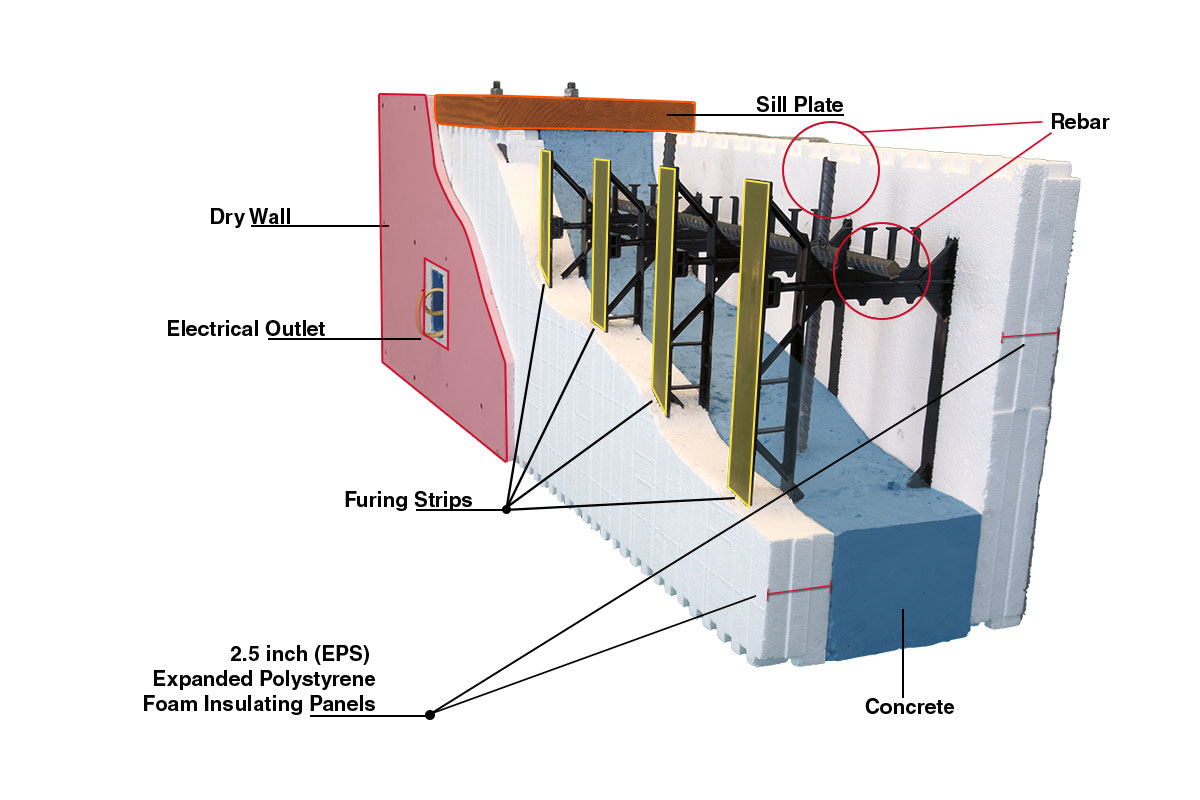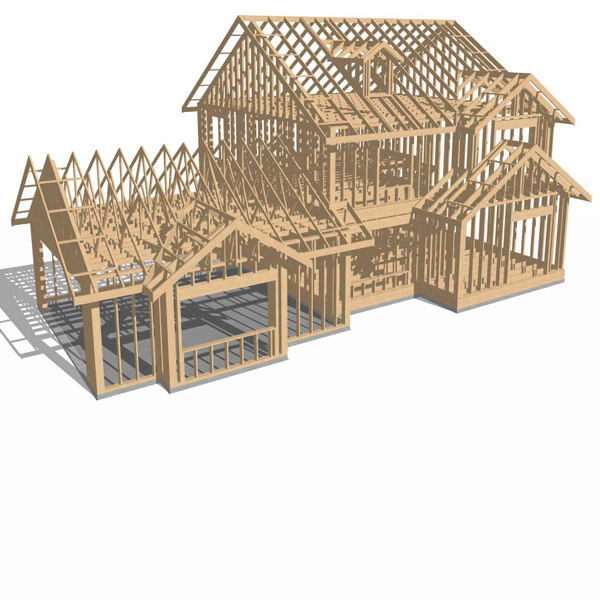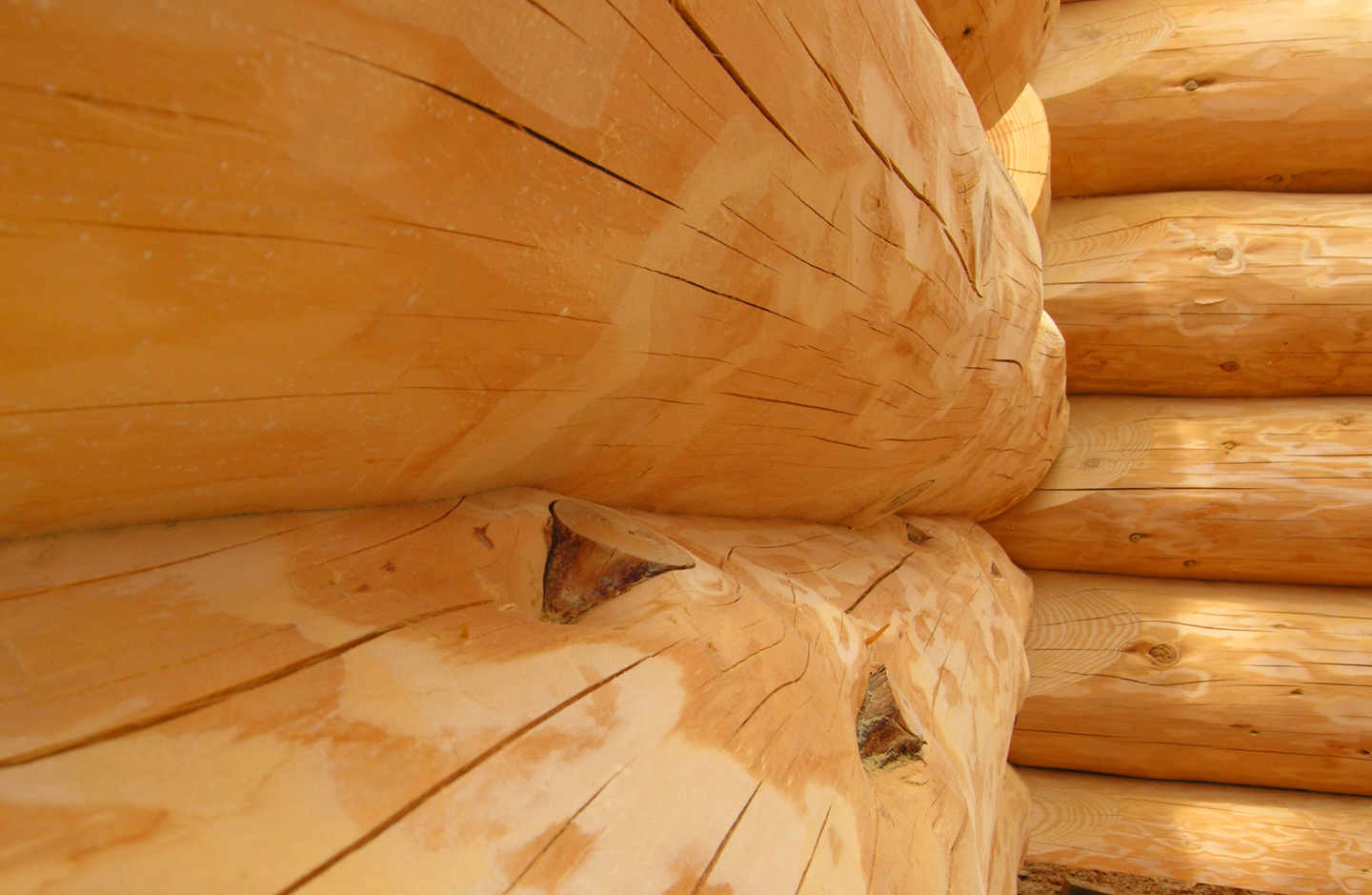BUILDING METHODS
Here at Authentiek Design we utilize a variety of building methods to best suit our clients specific desires and needs as it relates to budget, location, building restrictions, material, aesthetic and efficiency, to optimize time and cost.
Below are brief explanations of some of the techniques we specialize in to better help our clients understand what is available and to help determine what method or combination of methods best fits their projects needs.

INSULATED CONCRETE FORM (ICF)
Development
The ICF construction technique was first developed in Europe following World War II as an inexpensive and durable way to rebuild damaged structures.
The adoption of ICF construction has steadily increased since the 1970s, though it was initially hampered by lack of awareness, building codes, and confusion caused by many different manufacturers selling slightly different ICF designs rather than focusing on industry standardization. ICF construction is now part of most building codes and accepted in most jurisdictions in the developed world.
Construction
Insulating concrete forms are manufactured from any of the following materials:
- Polystyrene foam (most commonly expanded or extruded)
- Polyurethane foam (including soy-based foam)[2]
- Cement-bonded wood fiber
- Cement-bonded polystyrene beads
- Cellular concrete
- Thastyron, a mixture of cement, water and recycled expanded polystyrene.[3]
Reinforcing steel bars (rebar) are usually placed inside the forms before concrete is poured to give the concrete flexural strength, similar to bridges and high-rise buildings made of reinforced concrete. Like other concrete formwork, the forms are filled with concrete in 1-foot to 12-foot high “lifts” to manage the concrete pressure and reduce the risk of blowouts.
After the concrete has cured, the forms are left in place permanently to provide a variety of benefits, depending on materials used:
- Thermal insulation
- Soundproofing
- Good Surface burning characteristics rating
- Space to run electrical conduit and plumbing. The form material on either side of the walls can easily accommodate electrical and plumbing installations.
- Backing for drywall or other finishes on the interior and stucco, brick, or other siding on the exterior
- Improved indoor air quality
- Regulated humidity levels and mitigated mold growth (hygric buffer)
Characteristics
Energy efficiency
- Minimal, if any, air leaks, which improves comfort and reduces heat loss compared to walls without a solid air barrier
- High thermal resistance (R-value) typically above 3 K·m²/W (in American customary units: R-17[7]); this results in saving energy compared with uninsulated masonry (see comparison)
- Continuous insulation without thermal bridges or “insulation gaps”, as is common in framed construction
- Thermal mass, when used well and combined with passive solar design, can play an important role in further reductions in energy use, especially in climates where it’s common to have outside temperatures swing above inside temperatures during the day and below at night.
Strength
- Insulating concrete forms create a structural concrete wall, either monolithic or post and beam, that is up to ten times stronger than wood framed structures.
- Structural integrity for better resistance to forces of nature, compared to framed walls.
- The components of ICF systems — both the poured concrete and the material used to make the ICF — do not rot when they get wet.
- Insulating concrete forms structural system, if used in high seismic risk zones, has an acceptable ductility. [8]
Sound absorption
ICF walls have much lower rates of acoustic transmission. Standard thickness ICF walls have shown sound transmission coefficients (STC) between 46 and 72 compared to 36 for standard fiberglass insulation and drywall. The level of sound attenuation achieved is a function of wall thickness, mass, component materials and air tightness.
Fire protection
ICF walls can have four- to six-hour fire resistance rating and negligible surface burning properties. It is worth pointing out that the International Building Code: 2603.5.2[9] requires plastic foam insulation (e.g. Polystyrene foam, Polyurethane foam) to be separated from the building interior by a thermal barrier (e.g. drywall), regardless of the fire barrier provided by the central concrete. Forms made from cement bonded – wood fibers (eg[10]), polystyrene beads (e.g.[11][12]), or air (i.e. cellular concrete – e.g.[13]) have a fire rating inherently.
Indoor air quality
Because they are generally constructed without a sheet plastic vapor barrier, ICF walls can regulate humidity levels, mitigate the potential for mold and facilitate a more comfortable interior while maintaining high thermal performance.
Environmental sensitivity
ICF walls can be made with a variety of recycled materials that can minimize the environmental impact of the building. The large volume of concrete used in ICF walls has been criticized, as concrete production is a large contributor to greenhouse gas emissions.[14]
Vermin[
Because the entire interior space of ICF walls is continuously occupied (no gaps as can occur between blown or fiberglass insulation and a wood frame wall) they pose more difficulty for casual transit by insects and vermin. Additionally, while plastic foam forms can occasionally be tunneled through, interior concrete wall, and the Portland cement of cement-bonded type forms create a much more challenging barrier to insects and vermin than do walls made of wood.
Building Process
ICF construction is less demanding, owing to its modularity. Less-skilled labor can be employed to lay the ICF forms, though careful consideration must be made when pouring the concrete to make sure it consolidates fully and cures evenly without cracking. Unlike traditional wood beam construction, no additional structural support other than temporary scaffolding is required for openings, doors, windows, or utilities, though modifying the structure after the concrete cures requires special concrete cutting tools.
Floors and foundations
ICF walls are conventionally placed on a monolithic slab with embedded rebar dowels connecting the walls to the foundation.
ICF decking is becoming an increasingly popular addition to general ICF wall construction. ICF decking weighs up to 40% less than standard concrete flooring and provides superior insulation. ICF decking can also be designed in conjunction with ICF walls to form a continuous monolithic structure joined together by rebar. ICF deck roofs are less common, as it is difficult to pour concrete on an angled surface.[15]
Walls
ICF walls are constructed one row at a time, usually starting at the corners and working toward the middle of the walls. End blocks are then cut to fit so as to waste the least material possible. As the wall rises, blocks are staggered to avoid long vertical seams that can weaken the polystyrene formwork.[16] Structure frames known as bucks are placed around openings to give added strength to the openings and to serve as attachment points for windows and doors.
Interior and exterior finishes and facades are affixed directly to the ICF surface or tie ends, depending on the type of ICF. Brick and masonry facades require an extended ledge or shelf angle at the main floor level, but otherwise no modifications are necessary. Interior ICF polystyrene wall surfaces must be covered with drywall panels or other wall coatings.[17] During the first months immediately after construction, minor problems with interior humidity may be evident as the concrete cures, which can damage the drywall. Dehumidification can be accomplished with small residential dehumidifiers or using the building’s air conditioning system.
Depending on the experience of the contractor and their quality of work, improperly installed exterior foam insulation could be easy access for groundwater and insects. To help prevent these problems, some manufacturers make insecticide-treated foam blocks and promote installation of drainage sheeting and other methods for waterproofing. Drain tiles are installed to eliminate water.
Plumbing and electrical
Plumbing and electrical conduit can be placed inside the forms and poured into place, though settling problems could cause pipes to break, creating costly repairs. For this reason, plumbing and conduit as well as electrical cables are usually embedded directly into the foam before the wall coverings are applied. A hot knife or electric chainsaw is commonly used to create openings in the foam to lay piping and cabling. electrical cables are inserted into the ICF using a Cable Punch.[18] while ICFs made from other materials are typically cut or routed with simple carpentry tools. Versions of simple carpentry tools suitable for cement-bonded type forms are made for similar use with autoclaved aerated concrete.
ICF Costs
The initial cost of using ICFs rather than conventional construction techniques is sensitive to the price of materials and labor, but building using ICF can generally add 3 to 5 percent in construction cost over building using wood frame.[19] In most cases ICF construction will cost about 40% less than conventional (basement) construction because of the labor savings from combining multiple steps into one step. Above grade, ICF construction is typically more expensive, but when adding large openings, ICF construction becomes very cost effective. Large openings in conventional construction require large headers and supporting posts, whereas ICF construction reduces the cost, as only reinforcing steel is needed directly around the opening.
ICF construction can allow up to 60% smaller heating and cooling units to service the same floor area, which can cut the cost of the final house by an estimated $0.75 per square foot. So, the estimated net extra cost can be as much as $0.25 to $3.25.[20][21] ICF homes can also qualify for tax credits, further lowering the costs.
ICF buildings are less expensive over time, as they require less energy to heat and cool the same size space compared to a variety of other common construction methods. Additionally, insurance costs can be much lower, as ICF homes are much less susceptible to damage from earthquakes, floods, hurricanes, fires, and other natural disasters. Maintenance and upkeep costs are also lessened, as ICF buildings do not contain wood, which can rot over time or be attacked by insects and rodents.[22]
DIMENSIONAL LUMBER (Stick Method)
Dimensional lumber is lumber that is cut to standardized width and depth, specified in inches. Carpenters extensively use dimensional lumber in framing wooden buildings. Common sizes include 2×4 (pictured) (also two-by-four and other variants, such as four-by-two in the Australia, New Zealand, and the UK), 2×6, and 4×4. The length of a board is usually specified separately from the width and depth. It is thus possible to find 2×4s that are four, eight, and twelve feet in length. In Canada and the United States, the standard lengths of lumber are 6, 8, 10, 12, 14, 16, 18, 20, 22 and 24 feet (1.83, 2.44, 3.05, 3.66, 4.27, 4.88, 5.49, 6.10, 6.71 and 7.32 meters). For wall framing, “stud” or “precut” sizes are available, and are commonly used. For an eight-, nine-, or ten-foot ceiling height, studs are available in 92 5⁄8 inches (235 cm), 104 5⁄8 inches (266 cm), and 116 5⁄8 inches (296 cm). The term “stud” is used inconsistently to specify length; where the exact length matters, one must specify the length explicitly.

STRUCTURAL INSULATED PANEL (SIP)
A structural insulated panel (or structural insulating panel), SIP, is a composite building material. It consists of an insulating layer of rigid core sandwiched between two layers of structural board. The board can be sheet metal, plywood, cement, magnesium oxide board (MgO) or oriented strand board (OSB) and the core either expanded polystyrene foam (EPS), extruded polystyrene foam (XPS), polyisocyanurate foam, polyurethane foam or composite honeycomb (HSC).
SIPs share the same structural properties as an I-beam or I-column. The rigid insulation core of the SIP acts as a web, while the sheathing fulfills the function of the flanges. SIPs combine several components of conventional building, such as studs and joists, insulation, vapor barrier and air barrier. They can be used for many different applications, such as exterior wall, roof, floor and foundation systems.


TIMBER FRAME CONSTRUCTION
Timber framing and “post-and-beam” construction are methods of building with heavy timbers rather than dimensional lumber such as 2x4s. Traditional timber framing is the method of creating structures using heavy squared-off and carefully fitted and joined timbers with joints secured by large wooden pegs (larger versions of the mortise and tenon joints in furniture). It is commonplace in wooden buildings from the 19th century and earlier. The method comes from making things out of logs and tree trunks without modern high tech saws to cut lumber from the starting material stock. Using axes, adzes, and draw knives, hand-powered auger drill bits (brace and bit), and laborious woodworking, artisans or farmers could gradually assemble a building capable of bearing heavy weight without excessive use of interior space given over to vertical support posts. Since this building method has been used for thousands of years in many parts of the world, many styles of historic framing have developed. These styles are often categorized by the type of foundation, walls, how and where the beams intersect, the use of curved timbers, and the roof framing details. Three basic types of timber frames in English-speaking countries are the box frame, cruck frame, and aisled frame.
SCANDINAVIAN FULL SCRIBE
(also known as the “chinkless method”)
This method is thought to have originated in the northern European countries and goes back centuries with many fine examples still standing today. We carefully hand select each and every log and carefully hand peel with drawknives, selected for location on the building, meticulously hand scribed and cut with chainsaws and finished with hand tools.These are one of the most complex of any home to design and build correctly.

